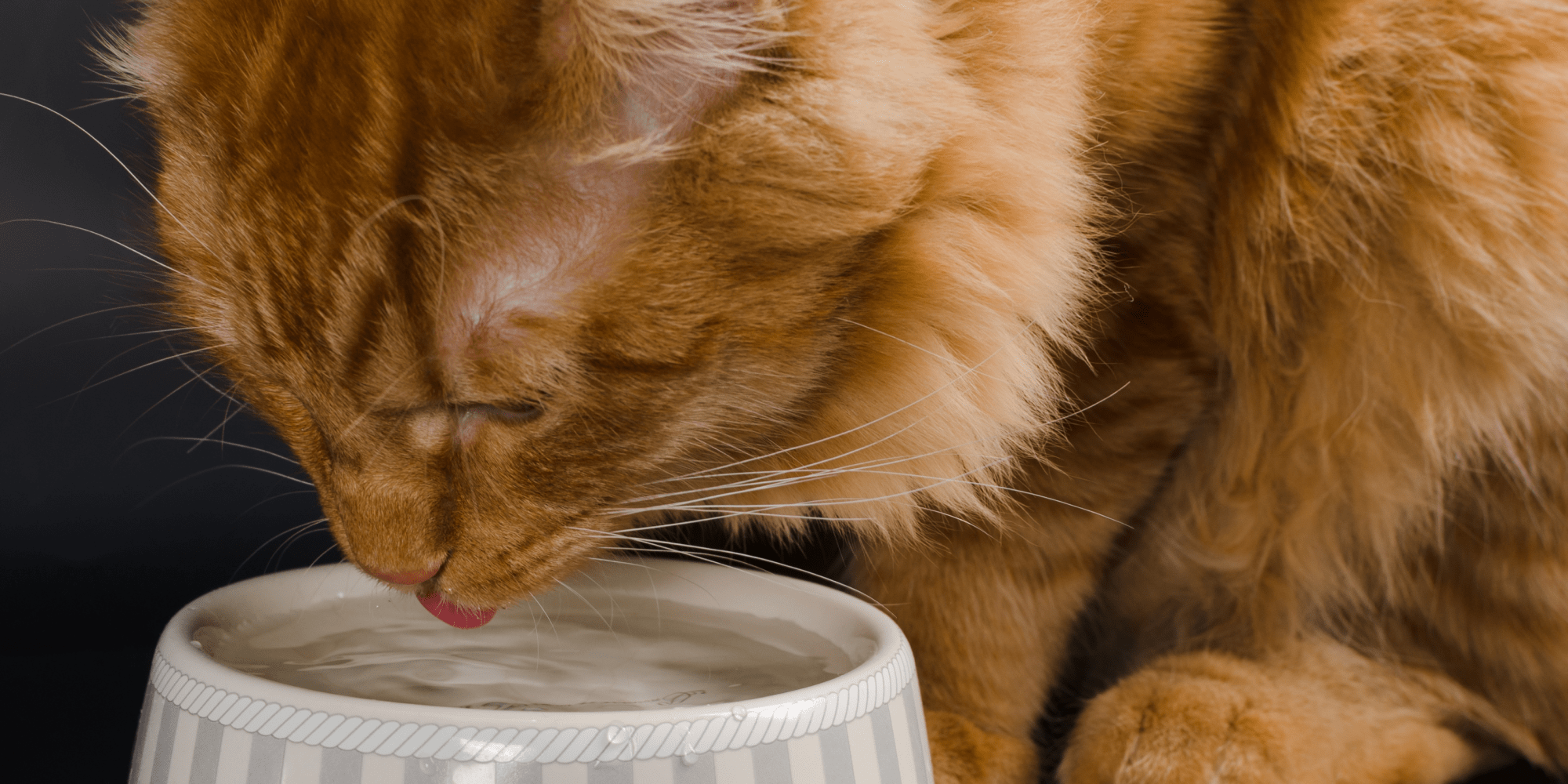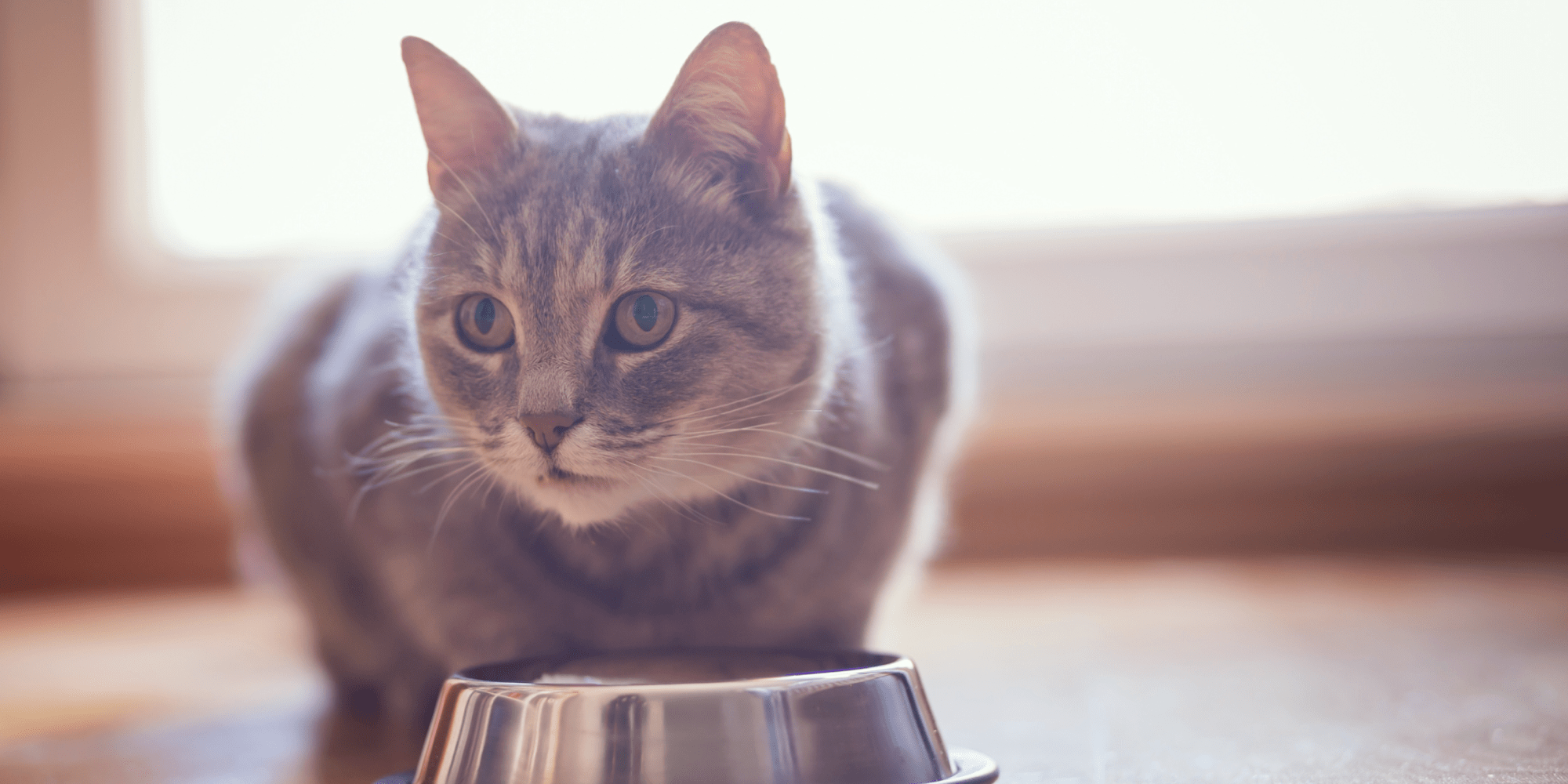Chronic Kidney Disease (CKD) in cats
Overview
- Chronic kidney disease (CKD) is a common problem in cats, especially as they get older.
- Symptoms can include increased thirst, peeing more, decreased appetite, weight loss, vomiting, and poor coat condition.
- There is no cure for CKD — it’s a condition that gets worse over time, but there are ways you and your vet can manage your cat’s condition and help reduce the symptoms.

The kidney’s job is to take natural waste products out of the blood and put them into urine, so they can be removed from the body when your cat pees. If your cat’s kidneys stop working properly, those waste products will start to build up and make them poorly.
Chronic kidney disease (CKD) is when the kidneys slowly stop working over a period of months to years. In most cases of CKD it’s not possible to find out what caused the kidneys to stop working, but we do know it’s very common in older cats as they have more wear and tear on their kidneys.
CKD can sometimes be brought on by specific problems such as:
- Polycystic kidneys — an inherited problem that causes cysts (fluid-filled sacs) to develop in the kidneys in certain breeds including Persians and British Shorthairs.
- Poisons — there are lots of medicines, foods and chemicals that can damage the kidneys and later lead to CKD.
- Bacterial or viral infections — urine infections can damage the kidneys, as can certain viruses such as Feline Immunodeficiency Virus (FIV).
- Stones in the urinary system — stones and sludge caused by mineral build-ups in the bladder or urinary system can cause blockages and kidney damage.
- Cancer — kidney tumours are rare but can lead to CKD.
CKD results from damage to the kidneys that develops slowly over months and years and tends to cause symptoms which slowly progress. This is different from acute kidney disease, which develops if something suddenly causes a large amount of damage to the kidneys such as an infection or a poison such as antifreeze or lilies. Cats with acute kidney disease tend to develop serious symptoms very quickly.
Symptoms
Chronic kidney disease might not cause any symptoms in the early stages because the kidneys are still able to manage. Once the kidneys have been significantly damaged and are unable to cope, the symptoms will start to appear. Some can appear very slowly and can be hard to spot. Symptoms include:
- Drinking more
- Peeing more
- Eating less
- Weight loss
- Vomiting
- Low energy (lethargy)
- Bad breath with a “urine” smell
- Mouth ulcers
- Messy or matted coat (due to not grooming)
- Sudden blindness (due to increased blood pressure)
Diagnosis
Chronic kidney disease can be diagnosed using blood and urine tests. These tests detect raised levels of certain substances that may indicate the kidneys aren’t working properly. If necessary, these test results will also help your vet grade your cat’s kidney disease, which indicates how serious it is. Your vet might also test your cat’s blood for other issues that are associated with CKD, such as hyperthyroidism (an overactive thyroid) which can be caused by CKD.
Your vet may also check your cat’s blood pressure because it can become dangerously high in cats with CKD.
In some circumstances, it’s necessary to take an X-ray or perform an ultrasound scan to check the shape and size of the kidneys.
Treatment
It’s not possible to cure chronic kidney disease or reverse the damage that has already been done, but it is possible to slow it down and reduce the symptoms.
If your cat is poorly when they are diagnosed with chronic kidney disease, initial treatment might include:
- Fluids — cats with kidney disease tend to produce large amounts of urine and become dehydrated. Your vet may need to put your cat on a fluid drip to replace some of the fluids they’ve lost.
- Appetite and anti-sickness medication — kidney disease causes toxins to build up in the blood which results in nausea (feeling sick) and a reduced appetite. To reverse this, your vet may need to give your cat an anti-sickness medication and an appetite stimulant.
- Medication for blood pressure — kidney disease causes high blood pressure which can lead to further kidney damage and other complications such as sudden blindness. If your cat’s blood pressure is raised your vet may prescribe them with blood pressure medication.
- Antibiotics — cats with CKD are prone to urine infections (UTIs) so your vet might prescribe antibiotics if your cat has signs of an infection.
Once your cat is stable, they will need ongoing treatment, which is likely to include:
- Feeding a special kidney diet — a special diet with the right levels of protein, phosphorus and sodium is the most important change you can make to help your cat live a good quality life for as long as possible. Ideally, pick a wet food to increase the amount of water your cat gets in their food. Your vet will help you choose the most appropriate food for your cat.
- Increasing water intake — encourage your cat to drink as much as possible to support their kidneys and prevent dehydration. Provide fresh water in multiple bowls around the house. Some cats prefer running water so you could try introducing a pet water fountain.
- Phosphate binders — phosphate levels can build up to dangerous levels in cats with CKD especially if they aren’t eating a special kidney diet, or the diet alone isn’t enough to control their levels. If your cat has raised phosphate levels your vet may suggest adding a phosphate binder to their food.
- Regular monitoring — it’s important for your cat to have regular check-ups with your vet. These checks may also include blood tests, urine tests, and blood pressure checks. Your vet will let you know how often they would like to see your cat.
- Vitamins — your vet may prescribe vitamin supplements for your cat.
- Other treatments — if your cat has complications from their CKD, such as anaemia (low red blood cell count) your vet might suggest additional treatments.
Outlook
- It’s possible for cats with CKD to live for months to years with treatment and regular monitoring.
- However, over time their symptoms will get gradually worse so it’s important to keep monitoring them and considering their quality of life.
- Once treatment isn’t helping any more, and their quality of life is affected, it may be kinder to consider euthanasia (putting them to sleep).
When to contact your vet
It’s important to contact your vet if:
- You notice any symptoms of CKD — the earlier chronic kidney disease is detected the better.
- If your cat has been diagnosed with CKD and their symptoms are getting worse despite treatment, or if there are any changes in symptoms, especially if your cat is eating less.
- Your cat is entering their senior years — chronic kidney disease is much more common in older cats so it’s sensible to have your cat checked regularly once they enter their senior years (8+).
Cost
Treatment and monitoring for CKD can become very expensive. It’s important to speak openly to your vet about your finances, the cost of treatment, as well as what you think is right for your cat. There are often several treatment options so if one doesn’t work for you and your cat then the vet may be able to offer another.
Consider insuring your cat as soon as you get them, before any signs of illness start. This will ensure you have all the support you need to care for them.

It’s best to introduce your cat to their new kidney diet gradually so they have time to get used to it. Start by offering them a small amount in a separate bowl alongside their normal food. Then gradually increase the amount you’re offering, and decrease their normal food, until they’re only eating kidney food. Most cats will eventually accept their new food. It’s best to give your cat several small meals per day and remove all uneaten food after an hour (old food puts some cats off eating).
If your cat won’t eat their kidney food, you could try:
- Putting their bowl in a quieter area.
- Warming their food slightly by adding a small amount of warm water — this will make their food smell stronger and might tempt them.
- Giving them a strong-smelling treat to tempt them, then offer them their kidney food once they’ve started eating.
- Feeding both wet and dry food — wet food is always preferable, but dry food is better than no food.
- Swapping to a different brand.
It’s always best for a cat with CKD to eat something rather than nothing, so if your cat completely refuses to eat their kidney food, offer them something else until you can speak to your vet for advice.
What are the stages of chronic kidney disease?
There are four stages of CKD — stage one is the least severe and stage four is the most. Although staging isn’t always necessary, it can help your vet decide on a treatment plan. If necessary, your vet will be able to find out which stage your cat is in based on their blood, urine and blood pressure test results.
When should I think about euthanasia?
Although it’s a difficult decision, euthanasia (putting your cat to sleep) might be the kindest option if your cat is poorly with CKD and treatment isn’t helping. Think about your cat’s quality of life — are they in pain, are they eating and drinking, are they keeping clean and are they coping overall? You should also think about yourself and whether you are coping with looking after your cat. Don’t be afraid to discuss this with your vet, who will be able to support you in making this decision.
Published: May 2023
Did you find this page useful?
Tell us more
Please note, our vets and nurses are unable to respond to questions via this form. If you are concerned about your pet’s health, please contact your vet directly.
Thank you for your feedback
Want to hear more about PDSA and get pet care tips from our vet experts?
Sign up to our e-newsletter
Written by vets and vet nurses. This advice is for UK pets only. Illustrations by Samantha Elmhurst.

